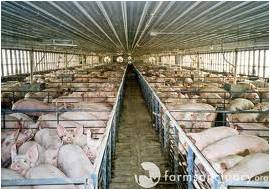Practitioner's Tool / Determining Wastewater Strength and Loading
Wastewater systems have to be designed for hydraulic and organic loading. There are several factors to consider, including dilution from stormwater, changes in feed, and animal population dynamics.
Wastewater treatment is really a process run by microbes. The microbes need a certain amount of food to do their job (eat the waste). The food is in the form of organic matter or biochemical oxygen demand--a measurement of how much air the microbes need to consume a certain amount of the organic matter in the wastewater. If there is too much organic matter for your onsite wastewater treatment system, the microbes cannot keep up. In this case, you will get only partial treatment, and your system will fail.
Go to the toolkit to get ideas on how to estimate organic matter for your project. Then calculate the loading in kilograms per day.
Design Flow and Loading Determination Guidelines for Wastewater Treatment Plants
The following is adapted from the Minnesota Pollution Control Agency in the United States. View the complete text online.
The determination of design flows and pollutant loadings is one of the most important items in the planning of a new or expanded wastewater treatment facility. A detailed analysis of existing flow conditions and the use of adequate flow estimates will determine the hydraulic and pollutant removal capacity needed to properly treat the wastewater and comply with permit conditions. It is necessary to include all contributing flow streams and pollutant loading sources in this analysis, including all residential, seasonal, institutional, commercial, industrial, inflow, infiltration, return and recycle streams and any other unique aspect of flow and pollutant contributions.
These guidelines are the recommended procedures for estimating the design flow and pollutant loading conditions and are considered to be the minimum values necessary to assure adequate treatment facility capacity. It is expected that sound engineering judgment will be used to determine the appropriate design conditions for each individual treatment facility and that consideration will be given to impacts of decisions on upstream and downstream unit processes.
Terms and Required Data Points
The flow monitoring period for any particular project must record flow data during critical low as well as peak wet weather flow events. Data collected during these flow periods are used to estimate the four flow conditions that are critical to the design and operation of wastewater treatment plants:
- The average dry weather flow is the daily average flow when the ground water is at or near normal, and a runoff condition is not occurring.
- Average wet weather or peak month flow is the daily average flow for the wettest 30 consecutive days for mechanical plants or for the wettest 180 consecutive days for controlled discharge pond systems. The 180 consecutive days for pond systems should be based on either the storage period from approximately November 15 through May 15 or the storage period from approximately May 15 through November 15.
- The peak hourly wet weather flow is the peak flow during the peak hour of the day at a time when the ground water is high and a five-year one-hour storm event is occurring. To determine this five-year one-hour storm event for the specific project, please refer to the local weather service in your area.
- The peak instantaneous wet weather flow is the peak instantaneous flow during the day at a time when the ground water is high and a twenty-five year one-hour storm event is occurring.

